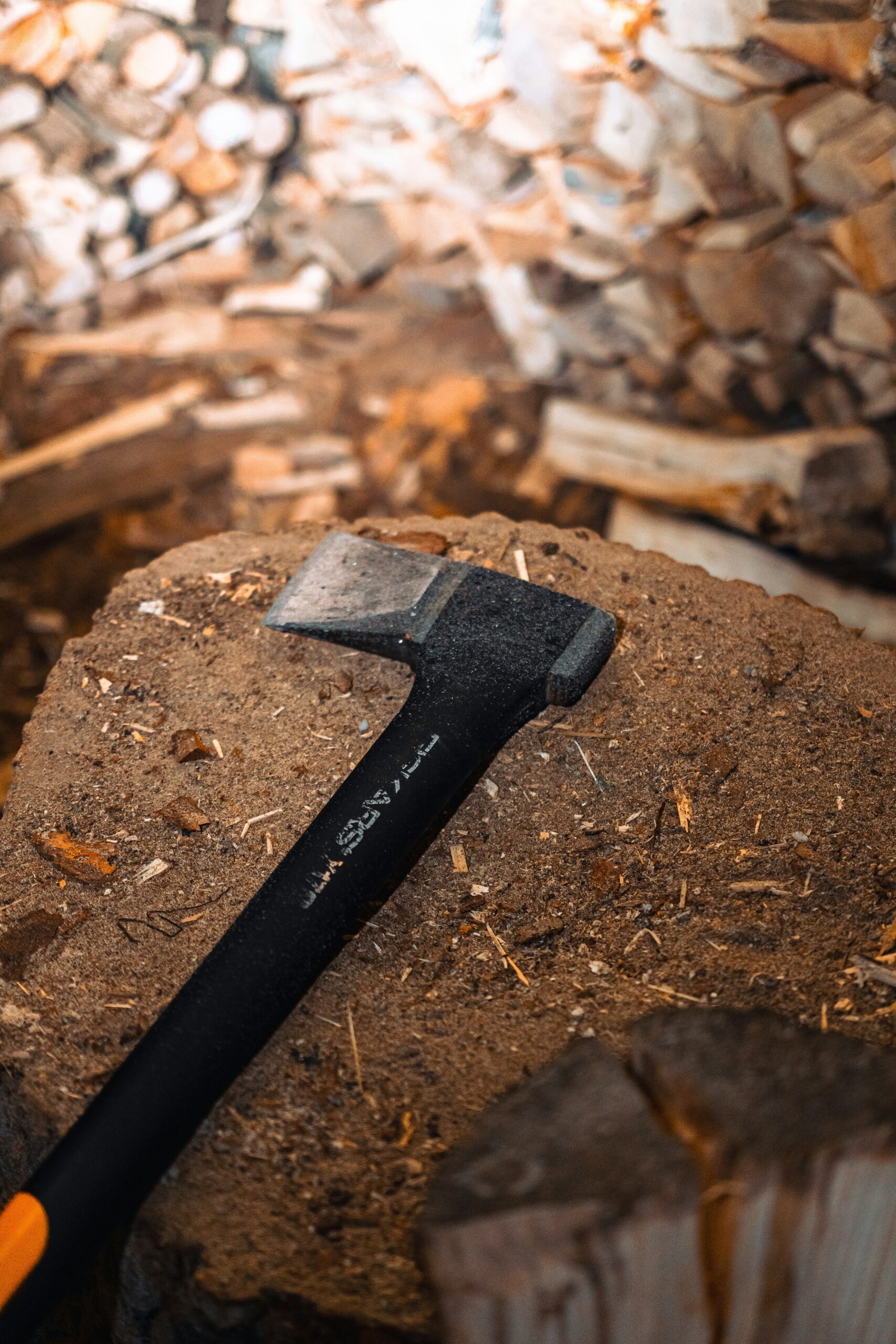Axe-throwing contests can be challenging, especially when it comes to mastering scoring. Did you know that many participants struggle to hit their targets consistently? This guide breaks down the fundamentals of scoring in axe-throwing contests, shares techniques to sharpen your skills, and outlines strategies for improving competition performance.
You’ll learn how to boost your scores, confidently understand the rules, and choose the best hatchet for competitive success. Whether you’re a beginner or refining your skills, this guide will help you overcome common challenges and excel in axe-throwing events.
Key Takeaways
- Understanding scoring zones greatly improves accuracy in axe-throwing contests
- Setting personal goals helps manage nerves and boosts performance in competitions
- Selecting the right equipment enhances scoring potential during axe-throwing events
- Familiarity with referee signals ensures competitors stay focused and informed during contests
- Practicing consistently is essential for skill development and confidence in axe throwing
Understanding the Fundamentals of Scoring in Axe Throwing Contests

Understanding the fundamentals of scoring in axe throwing contests is crucial for any competitor. This section covers key topics such as familiarizing yourself with the target and scoring zones, interpreting the points system used in competitions, and recognizing official scoring procedures and referee signals. Each aspect plays a vital role in determining a player’s ranking in the bracket and can significantly influence the contest’s outcome.
Familiarizing Yourself With the Target and Scoring Zones
Understanding the target and scoring zones is essential for improving throwing skills and maximizing scores in axe-throwing contests. As recognized by major leagues like WATL (World Axe Throwing League), the target typically consists of several concentric circles, each with different point values assigned. Competitors should aim for the highest-scoring areas, especially during tie-breaker rounds known as sudden death, where precision becomes critical.
- Familiarize yourself with the target layout and scoring zones.
- Know the point values for each zone.
- Aim for high-scoring areas during all throws.
- Understand the importance of scoring in sudden-death situations.
Interpreting the Points System Used in Competitions
Understanding the points system in axe-throwing competitions is vital for any player aiming for success. In tournaments, hitting a bullseye at the center of the target usually earns the highest score—typically five points. Knowing how these points contribute to a player’s performance in playoffs can help strategize throws and improve overall rankings.
- Players should know the scoring structure used in competitions.
- Getting a bullseye is the key to maximizing points.
- A clear understanding of how points affect tournament standings is crucial.
Recognizing Official Scoring Procedures and Referee Signals
Recognizing official scoring procedures and referee signals is essential for competitors in axe-throwing contests. Each league, including the World Axe Throwing League, has specific rules that referees enforce to ensure fairness. Knowing how referees indicate scores and resolve disputes helps players stay focused and understand their performance during the competition. This clarity is vital for maintaining a competitive edge:
- Understand common referee signals for scoring and fouls.
- Stay informed about the specific rules of the competition.
- Be prepared for appeals based on referee calls.
Mastering Axe-Throwing Techniques to Improve Scores

Perfecting grip and stance is vital for precision in axe throwing. Developing consistent throwing motions helps players improve their accuracy while practicing release timing, which leads to optimal results. Furthermore, implementing effective breathing techniques can enhance focus and control. Each area is key in boosting scores and overall performance during competitions.
Perfecting Grip and Stance for Precision
To improve accuracy in axe throwing, competitors should focus on perfecting their grip and stance. A proper grip allows for better control, ensuring that the axe is released smoothly and at the right angle. Additionally, maintaining a balanced stance helps manage body weight and stability during the throw, leading to more consistent hits on the target.
- Ensure a firm yet relaxed grip on the axe.
- Position feet shoulder-width apart for stability.
- Align the body towards the target for a better aim.
Developing Consistent Throwing Motions
Developing consistent throwing motions is key to achieving high scores in axe-throwing contests. A well-practiced throw not only enhances accuracy but also builds confidence during competitions. Competitors can improve their overall performance and enjoy more successful throws by starting from the same position, maintaining a smooth follow-through, and synchronizing body movements.
Practicing Release Timing for Optimal Results
Practicing release timing is vital for achieving optimal results in axe-throwing contests. Competitors need to develop a routine that focuses on the moment of release, as this can greatly affect the accuracy and distance of the throw. By timing the release correctly, players can ensure the axe travels smoothly toward the target, ultimately leading to higher scores and improved performance during competitions:
Implementing Effective Breathing Techniques
Implementing effective breathing techniques can significantly enhance performance in axe-throwing contests. Proper breathing helps maintain composure and focus, especially during crucial moments when precision counts the most. Players should practice inhaling deeply before their throw and exhaling steadily as they release the axe, creating a rhythm that supports steady aim and reduces tension:
- Deep breaths before throwing help reduce anxiety.
- Exhaling during the release encourages steadiness.
- Consistent breathing patterns improve overall concentration.
Strategies to Enhance Performance in Competitions

Setting personal goals for each round helps competitors focus on specific targets. Analyzing and adapting to different target conditions can enhance accuracy. Managing nerves and maintaining focus are vital under pressure. Learning from opponents and adopting their successful tactics can further improve performance. Each strategy plays a crucial role in achieving better scores in axe-throwing contests.
Setting Personal Goals for Each Round
Setting personal goals for each round in axe-throwing competitions effectively allows competitors to stay focused and track their progress. Players can enhance their performance by establishing clear, achievable objectives, such as hitting a certain number of bullseyes or improving throw accuracy. This approach boosts motivation and helps manage nerves, as having specific targets allows competitors to channel their energy productively during contests.
Analyzing and Adapting to Different Target Conditions
Analyzing and adapting to different target conditions is crucial for success in axe-throwing competitions. Factors such as target distance, lighting, and weather can affect performance. For instance, if the target is further away, players may need to adjust their throwing angle and power to ensure accuracy.
By observing these changes and modifying their technique accordingly, competitors can significantly improve their scores and overall enjoyment of the game.
Managing Nerves and Maintaining Focus Under Pressure
Managing nerves and maintaining focus under pressure are essential skills for success in axe-throwing contests. Players can benefit from techniques like visualization, where they imagine making successful throws before stepping up to the line.
This mental preparation, combined with deep breathing exercises, helps calm nerves and keeps concentration sharp, allowing competitors to execute their throws confidently and precisely.
Learning From Opponents and Adopting Successful Tactics
Learning from opponents is a valuable strategy for enhancing performance in axe-throwing contests. By observing successful throwers’ techniques and tactics, competitors can identify effective grips, stances, and release methods. This knowledge allows them to adapt their own game, improving their scoring ability and overall enjoyment of the competition.
Selecting the Right Equipment for Better Scoring

Selecting the right equipment is essential for achieving better scores in axe-throwing contests. It begins with choosing axes that match a competitor’s throwing style, ensuring comfort and control. Regular maintenance and sharpening of the axe play a crucial role in consistency.
Lastly, understanding the effects of axe weight and balance can greatly influence overall performance. Each of these factors contributes significantly to scoring success.
Choosing Axes That Suit Your Throwing Style
Choosing the right axe is crucial for enhancing scoring in axe-throwing contests. Players should select axes that fit their throwing style, whether they prefer a lighter axe for speed or a heavier one for power. Testing different axes during practice sessions allows competitors to find an option that feels comfortable and helps improve both control and accuracy.
Maintaining and Sharpening Your Axe for Consistency
Maintaining and sharpening an axe is vital for consistency in axe-throwing contests. A dull axe can lead to poor performance and lower scores, as it may not penetrate the target effectively. Regular maintenance, including sharpening the blade and checking for any damage, ensures that competitors can rely on their equipment to perform at its best during competitions:
Understanding the Impact of Axe Weight and Balance on Performance
The weight and balance of an axe significantly influence performance in throwing contests. A lighter axe may offer speed and ease of control, making it great for those who focus on accuracy. In contrast, a heavier axe can provide more momentum, which benefits power-oriented throwers.
Competitors should experiment with different weights and balances to find the option that complements their throwing style and maximizes their scoring potential:
- Lightweight axes provide greater speed and precision.
- Heavyweight axes generate more force upon impact.
- Balanced axes enhance overall performance for various techniques.
Conclusion
Mastering scoring in axe-throwing contests is crucial for any competitor aiming for success. Understanding target zones and the points system helps players maximize their competition performance. Competitors also benefit from effective techniques and consistent practice, significantly enhancing their scoring potential. By following these insights, players can improve their accuracy and enjoy a more rewarding and competitive experience in the world of axe throwing.

